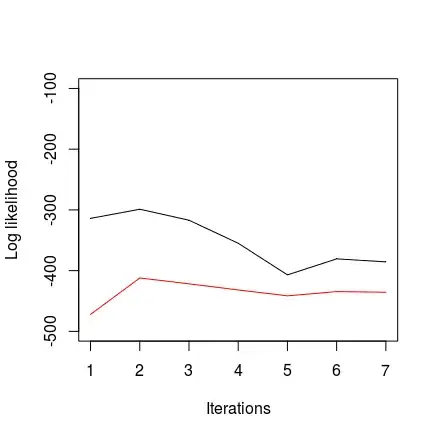I would first make a line plot to compare visually the 7 measurements:

In this plot I have rescaled Index.7 by dividing by 10. One can see that Index.2 is negatively correlated with the others. One can look at the pairwise correlations by
cors <- cor(mydata[, 2:8])
round(cors, 2)
Index.1 Index.2 Index.3 Index.4 Index.5 Index.6 Index.7
Index.1 1.00 -0.97 0.98 0.88 0.97 1.00 0.94
Index.2 -0.97 1.00 -0.99 -0.93 -0.98 -0.97 -0.96
Index.3 0.98 -0.99 1.00 0.95 0.99 0.98 0.98
Index.4 0.88 -0.93 0.95 1.00 0.96 0.88 0.94
Index.5 0.97 -0.98 0.99 0.96 1.00 0.97 0.96
Index.6 1.00 -0.97 0.98 0.88 0.97 1.00 0.94
Index.7 0.94 -0.96 0.98 0.94 0.96 0.94 1.00
But correlation is not a measure of agreement, but here it seems the usual agreement indices do not apply since not all measurements are on the same scale. Maybe we can use PCA, and test if there only one underlying dimension?
pca <- prcomp(mydata[, 2:8], scale.=TRUE)
summary(pca)
Importance of components:
PC1 PC2 PC3 PC4 PC5 PC6 PC7
Standard deviation 2.5993 0.40615 0.21677 0.15377 0.08543 0.02505 8.961e-17
Proportion of Variance 0.9652 0.02357 0.00671 0.00338 0.00104 0.00009 0.000e+00
Cumulative Proportion 0.9652 0.98878 0.99549 0.99887 0.99991 1.00000 1.000e+00
There are very few cases here for a formal analysis, but this at least indicates that one component is enough. See How do random data eigenvalues change, as random variables are added? for one idea about testing number of components.
Code for reading the data and the plot:
mydata <- read.csv("Indices_Data.xlsx - Indices.csv", header=TRUE)
# First plotting the data:
library(ggplot2)
library(reshape2)
# We rescale Index.7 by dividing by 10:
mydata_wide <- reshape2::melt(within(mydata, Index.7 <- Index.7/10. ),
id.vars="Material.ID",
variable.name="INDEX")
ggplot(mydata_wide, aes(x=Material.ID, y=value, color=INDEX, group=INDEX)) +
geom_point(size=3) + geom_line()
